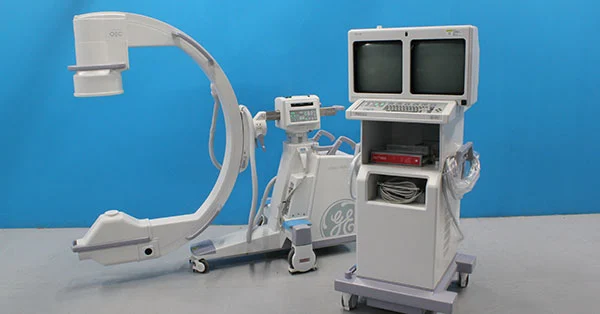Full C-arms are the largest and typically have the most generator power to penetrate thicker body parts. They also have the widest range of software options to fit every procedure. Compact c-arms combine imaging versatility into a portable system that you and your surgeons can move around the room. They eliminate the need for a monitor cart and may have dual or oversized single monitors.
Detector Size
Full-sized C-Arms have the largest arc and generator power to image large body parts like femurs, knees, shoulders, clavicles and lumbar spine. They are often used in hospital imaging departments, ambulatory surgery centers or physician’s offices. Mini C-Arms have smaller arcs and lower generator power to image extremities like hands, feet, ankles, wrists and knees. They are often used in hospital surgical departments, orthopedic and veterinary clinics, or physician’s offices. You can purchase them offline and on websites like https://www.minicarm.com/, where you can choose different types of mini C-arm.
A key specification to look for is onboard storage capacity. You will be taking many pictures and videos and want to ensure that all the data is saved to a place where you can easily access it. Also, ensure the system has sufficient cooling capabilities to avoid overheating during long procedures. It is important to ask about this during a demo or trial. You don’t want to have to stop the process from cooling down your C-Arm. It can also affect your patient’s treatment time.
Dose
The image quality is important as it allows medical professionals to make more accurate diagnoses and develop more effective treatment plans. In the end, patients get better results.
The Fluoroscan Insight c-arm is a portable imaging system that delivers high-resolution 3D data sets, allowing for spot identification and more precise positioning in the surgical suite without having to take multiple exposures. It will enable hand surgeons to perform more precise osteosynthesis and accelerate healing. The compact design eliminates the separate monitor cart on full-size systems, saving space and reducing clutter. Additionally, its powerful generator produces high-quality images while minimizing radiation exposure to the patient and staff. Physicians can reduce the patient’s entrance skin dose by up to 10 times and the scatter radiation by threefold. Moreover, it is easy to move between rooms and meets the power requirements of ORs.
Positioning
Because of their smaller arc and lower generator power capacity, mini C-arms cannot penetrate as deeply into the body. However, they still work well for extremities such as hands and feet. They can produce images quickly with a flat panel detector, providing instant results compared to the traditional C-arms, which need to convert light photons into electrons before making an image. In addition to the features, it is important to consider how easy a specific system will be for your surgeons and techs to use. Take some time to try different techniques with your team and get feedback on their experience. You want to ensure that everyone will be comfortable with it, so they can focus on what’s most important – the patient.
Resolution
Unlike full-size systems, which consist of a moon-shaped c-arm that moves along with a monitor cart, the mini version combines the image intensifier, console, generator, tube, detector, and x-ray arm into one unit. It allows for imaging versatility right in your surgical suite. The mini c-arm can also provide a better image due to its flat-panel detector (FPD) technology. Compared to the previous generation of products using image intensifier tubes, FPDs have higher resolution and less distortion. The CMOS-based flat-panel detectors are the latest evolution in surgical C-arm imaging, as they allow clinicians to work with lower radiation exposure. The low noise and high pixel readout of CMOS are important to reduce staff exposure while providing a fast frame rate for dynamic fluoroscopy. IGZO thin-film transistors are another potential new sensor for the C-arm market, as they can deliver high-resolution and lower radiation levels.
Also, Read: Don’t Sign the Car Insurance Company’s Release Before the Following



















